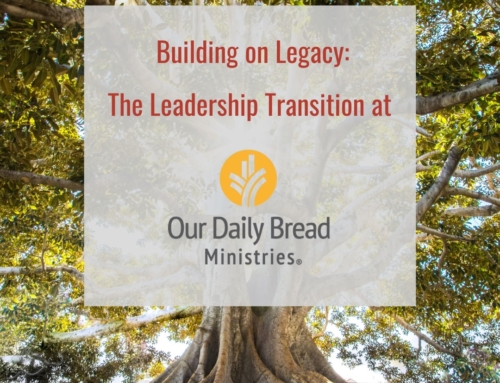Some years ago, I placed Diana (true story – but not her real name) as a mid-level executive in a fairly large financial services company that had offices and people distributed across the globe. The role Diana accepted was brand new and was still being defined, but her future boss had assured Diana that the two of them would collaborate to connect various disparate organizations within this large global company, and in so doing they would bring great value to the company. The day Diana reported to work, her boss went on maternity leave six weeks earlier than she had planned. Diana was left without a mission and without a boss. She called me after her first week and told me that she had come into the office each day that week but that she had received no direction and had not been able to have even one conversation with her boss. I pleaded for her patience, but after three weeks of being on the payroll with literally nobody realizing she was working there, I found the boss’s home phone number and gave her a call.
She told me that she was very sorry for the position Diana was in but that these circumstances were unforeseen. She told me that her boss (in Europe) was excited about Diana’s future but that his responsibilities would keep him from directly interfacing with Diana. Then she told me – and I will never forget it – that if Diana would just be patient and come into the office a few hours a week, that when she returned (still 10 weeks out!) she and Diana would connect and move forward on the plan they had originally envisioned. She asked me to encourage Diana because if Diana decided not to stay, the position requisition would not be re-approved, and she would not be able to accomplish the goal for which she had hired Diana. Unbelievably, Diana had become a “place-holder” in an international organization. Realizing that she could not morally accept compensation for what would become nearly four months, while creating no organizational value, Diana resigned. She told me that as excited as she was about working in this globally branded company, she could not, in good conscience, continue in a role in which she was creating no value.
“Value” is an interesting word. It may reflect the foundational personal or institutional principles by which we live. It may also describe the cost or preciousness of an item. In the workplace it becomes the single common denominator of every organization on the planet – we work to create value. Whether the focus is our shareholders, our customers or our constituents, every employed person who reads this article works for an organization whose foundational purpose is to create and deliver value. The value that your organization creates is often referred to as its “value proposition,” and every position that is filled, and every person that is hired, must in some way contribute to that organizational mission of value creation.
The decision to fill a position is deceptively complex. Think about it. In most organizations, when someone is promoted, retires, quits, gets fired or dies (the only five ways in which jobs are vacated), we immediately begin the search for the next employee to fill that role. If, for a moment, you consider the chain of people who have had that job and develop a bit of an “employment genealogy,” you might realize that Sue, who has just resigned, replaced Bob, who retired and moved to the beach. Bob, you’ll recall, was assigned to the role when Darryl accepted an international promotion, and Darryl was asked to take the position after Harry’s untimely death. Although you don’t know who had the job before Harry, someone probably did. But if you go back far enough, there was a day when that job did not exist, and somebody envisioned and invented the role. At that time, the job’s creator believed that that this new job would in some way contribute to value creation within your organization.
While replacing Sue may be the reactionary next step to her resignation, at one time there was a specific intentionality to the creation of that job, and it can be found in the intended value that the position would contribute to the organization. In fact, using either analytics or intuition, someone determined that adding this position would create incremental margin – more value than the total cost of compensation, benefits and organizational support required by the role. Before any position should be “refilled” it should be reassessed for its ability to create value, and its description should be redrafted with a renewed focus on value creation within the contemporary organizational setting.
Once you understand your organization’s value proposition, you can begin to understand the ways in which a specific job contributes to it. Although organizational value is created in countless ways, there are three basic functional contributions to value, and every employee in any organization does at least one of three things: 1) Create the product, 2) Deliver the product or 3) Administrate the organization. The breadth of their role in regard to these three functions is usually dependent upon the size of the organization. In very small companies, each person, wearing many hats, often contributes daily in all three functional areas. In the largest of organizations, team members may have roles so specific, with such seemingly precise responsibilities, that it can often be hard to determine in which of these three primary functions each role lies, but it will most certainly lie in at least one of them. It is critical to understand how a role contributes to the creation of shareholder, customer or constituent value with respect to an organization’s product or service offering. If alignment cannot be drawn between the role and its ability to create value in excess of its cost, the position should simply not be filled. The work associated with that position should either be eliminated from the organization or divided up among other organizational roles in such a way as to re-establish the likelihood of value creation.
Before you can determine how a position creates value, you must understand how your organization creates value. Virtually every organization has products that fall into one of two broad categories. In some instances a product is tangible and is manufactured; these products are generically referred to as “goods.” In other cases the product is a “service” that is rendered. Tangible manufactured products are generally easy to identify, in that we can see or touch them. The service offerings in some organizations may be more difficult to identify. Access to information (provided by anything from a school to a search engine), access to people (such as a club or an association might offer) and access to capital (as in an investment bank) are just a few of the service offerings that allow an organization to deliver value. Small companies and organizations are typically aligned around either goods or services, whereas large companies are often a complex matrix of goods and services organizations that spend much time and effort working to coordinate their activities to create organizational value. With both large and small organizations, every position must contribute to organizational value, or it should not be budgeted.
As an aside, if every person in an organization is paid exactly what they are worth to an organization, the organization has lost its ability to create marginal “value.” Margin (and ultimately value) is established by compensating people in such a way that the total cost of employing them is less than the value that they bring to the organization. Each of us ultimately benefits (and earns employment security) when we can create value for our organization in excess of the amount of our cost to be employed. In our story of Diana, she quickly recognized that organizational circumstances precluded her from being able to create value in a way that aligned with her compensation, and at some root level she felt like she was unfairly taking compensation – almost “stealing” value from the company. She took a high moral road and resigned.
Understanding your company’s product (goods and services) and the role that an open position has in creating that product, delivering that product or administrating the company for the ultimate creation of value is the foundation upon which all hiring strategy is built. Once you have a sense of why you are filling a position, you have a much more solid platform to which you can recruit. Now you must decide if you will move someone into the role internally or begin looking outside of your organization to recruit candidates for a specific role.





